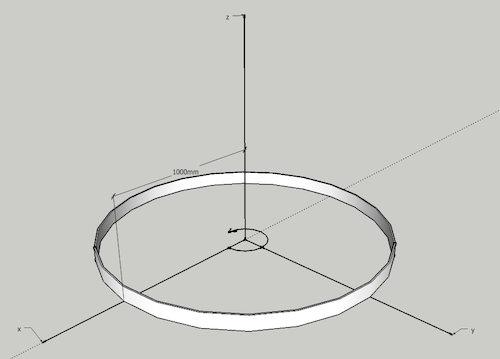

Moment of inertia equation physics how to#
The second law Σ F → = m a → Σ F → = m a → tells us the relationship between net force and how to change the translational motion of an object. Deriving Newton’s Second Law for Rotation in Vector FormĪs before, when we found the angular acceleration, we may also find the torque vector. It makes sense that the relationship for how much force it takes to rotate a body would include the moment of inertia, since that is the quantity that tells us how easy or hard it is to change the rotational motion of an object. With this equation, we can solve a whole class of problems involving force and rotation. This is called the equation for rotational dynamics. Thus, if a rigid body is rotating clockwise and experiences a positive torque (counterclockwise), the angular acceleration is positive.Įquation 10.25 is Newton’s second law for rotation and tells us how to relate torque, moment of inertia, and rotational kinematics. Remember the convention that counterclockwise angular acceleration is positive. The term I α I α is a scalar quantity and can be positive or negative (counterclockwise or clockwise) depending upon the sign of the net torque. Substituting this expression into Newton’s second law, we obtain Recall that the magnitude of the tangential acceleration is proportional to the magnitude of the angular acceleration by a = r α a = r α. We apply Newton’s second law to determine the magnitude of the acceleration a = F / m a = F / m in the direction of F → F →. The particle is constrained to move in a circular path with fixed radius and the force is tangent to the circle. Let’s exert a force F → F → on a point mass m that is at a distance r from a pivot point ( Figure 10.37). This raises the question: Is there an analogous equation to Newton’s second law, Σ F → = m a →, Σ F → = m a →, which involves torque and rotational motion? To investigate this, we start with Newton’s second law for a single particle rotating around an axis and executing circular motion. We have thus far found many counterparts to the translational terms used throughout this text, most recently, torque, the rotational analog to force. In this section, we introduce the rotational equivalent to Newton’s second law of motion and apply it to rigid bodies with fixed-axis rotation. We have analyzed motion with kinematics and rotational kinetic energy but have not yet connected these ideas with force and/or torque. In this section, we put together all the pieces learned so far in this chapter to analyze the dynamics of rotating rigid bodies. Explain how changes in the moment of inertia of a rotating system affect angular acceleration with a fixed applied torque.Calculate the torques on rotating systems about a fixed axis to find the angular acceleration.By the end of this section, you will be able to:


 0 kommentar(er)
0 kommentar(er)
